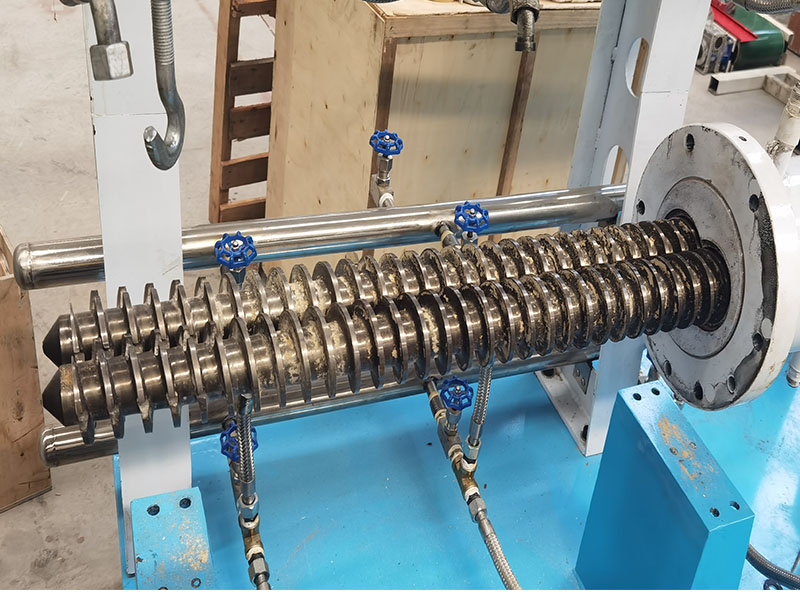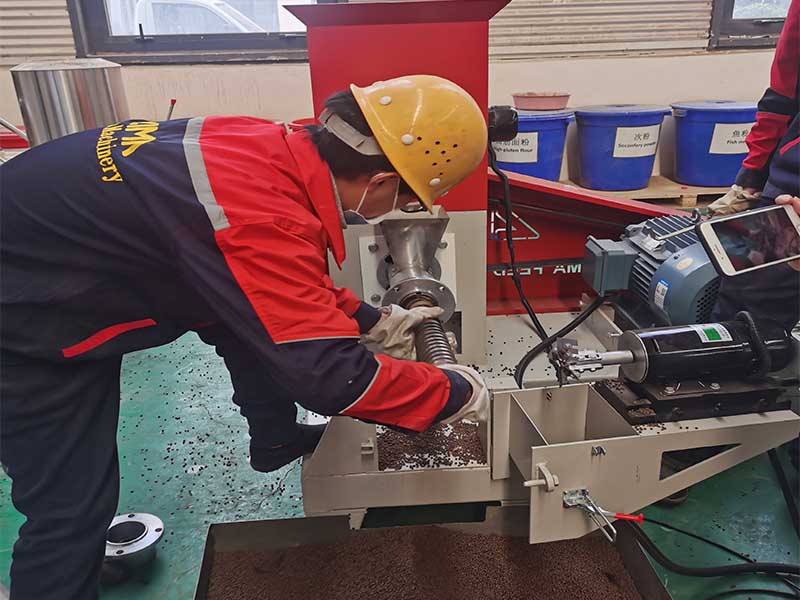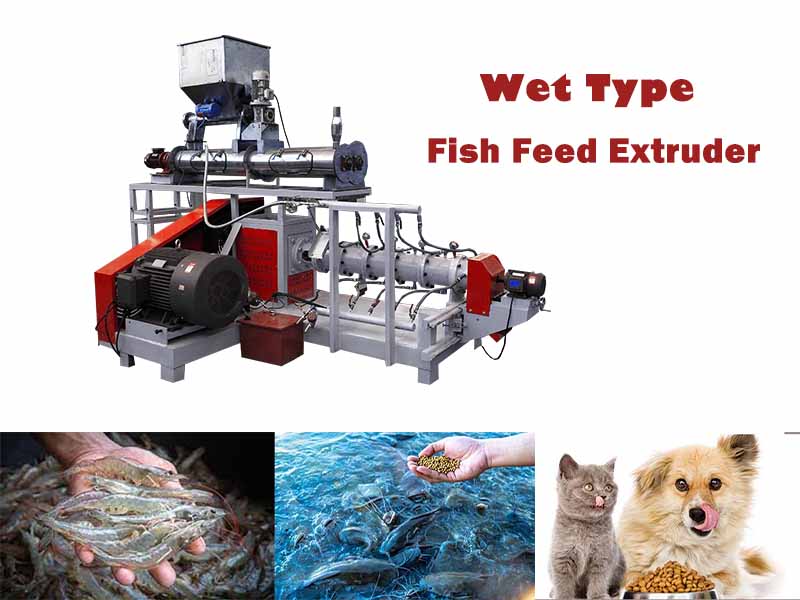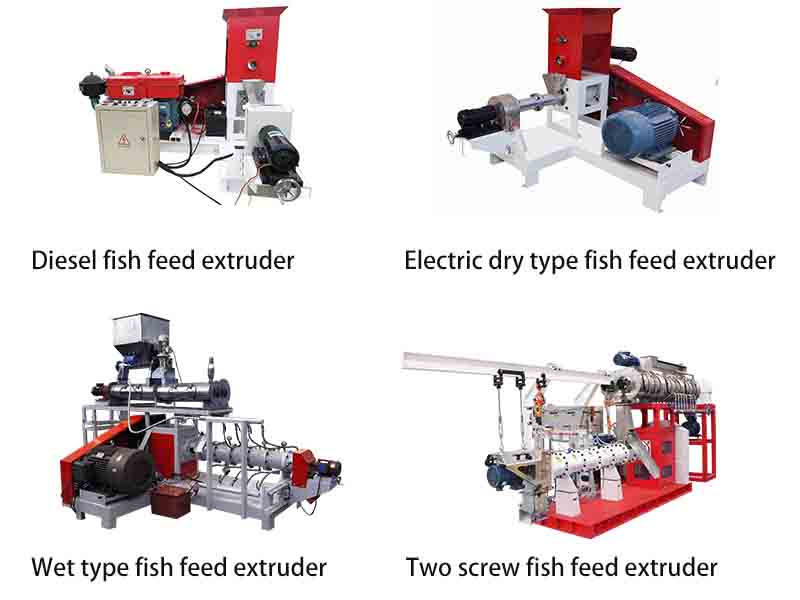What is the difference between single screw and twin screw extruder?
Most people in the aquatic feed farming industry are familiar with feed extruder machine. Howerer, For many aquatic products farmers and small beginner of feed manufacturers/suppliers, it may not be very clear about the difference between single-screw extruder and twin-screw.
Now, let us tell about what is the difference between single screw and twin screw extruder?
- 1. In terms of structure, the structure of the single-screw extruder is simpler
The single-screw extrusion and puffing usually adopts the belt drive mode, and the spindle speed is constant and unadjustable. The screw of the single-screw extruder is composed of a shaft connecting screw units of various structures. The whole screw consists of 3 sections: feeding section, kneading section or melting section and forming section. After the material enters the barrel from the feeding port, it undergoes a solid conveying and melting process in the screw, so that the material changes from a loose state to a continuous plastic dough.
The twin-screw extruder is developed on the basis of the single-screw extruder. In the barrel of the twin-screw extruder, two screws are arranged side by side. According to the relative position of the screw and the direction of the screw, it is divided into two parts. Non-meshing co-rotation, non-meshing relative rotation, meshing co-rotation, meshing relative rotation.
Compared with the twin-screw extruder, the single-screw extruder has low transmission efficiency and difficult process control.
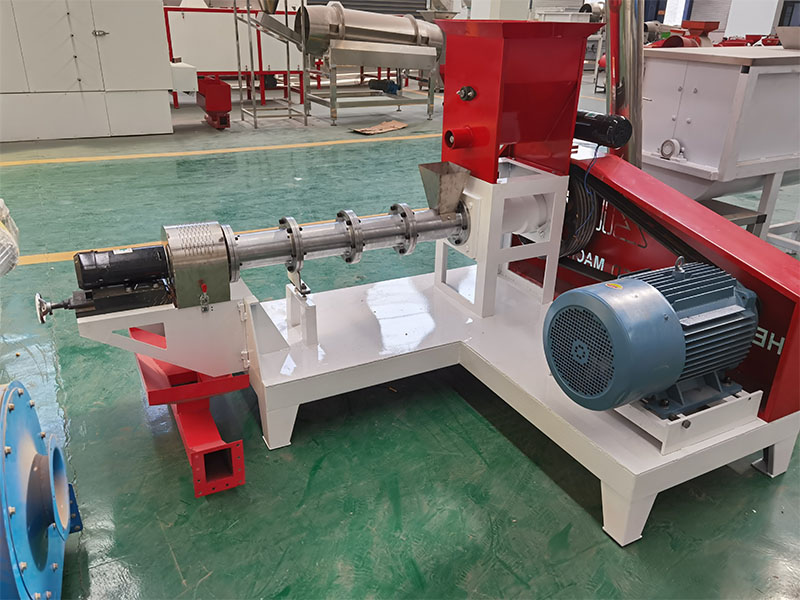
- 2. From the perspective of feed formulation raw materials, the twin-screw extruder can process more types of feed than the single-screw extruder, and has wider adaptability to raw materials.
It is suitable for processing high viscosity, low viscosity, high grease content, high moisture or stickiness, oily, very wet and some other raw materials that will slip during the production process of single screw extruder.
The single-screw extruder mainly relies on drag flow to complete the conveying device. Due to the structural characteristics of the single screw, when the material advances in the barrel, it depends on the friction between the barrel and the material. The larger it is, it will block the flow generated above and cause the material to stick to the screw. If the material adheres to the screw, it cannot be transported forward and blockage will occur. When the moisture and oil content of the material are higher, this The trend is more and more obvious, which limits the processing of low-viscosity raw materials, especially high-fat raw materials, by single-screw extruders.
The fully meshed co-rotating twin-screw extruder greatly improves material conveying, pumping and mixing characteristics. Although the twin screw extruder is also a drag flow machine, it has the added function of a positive pressure pump due to its 2 screws co-rotating and fully meshing. This makes the twin-screw extruder can be used to transport both high-viscosity materials and low-viscosity materials.
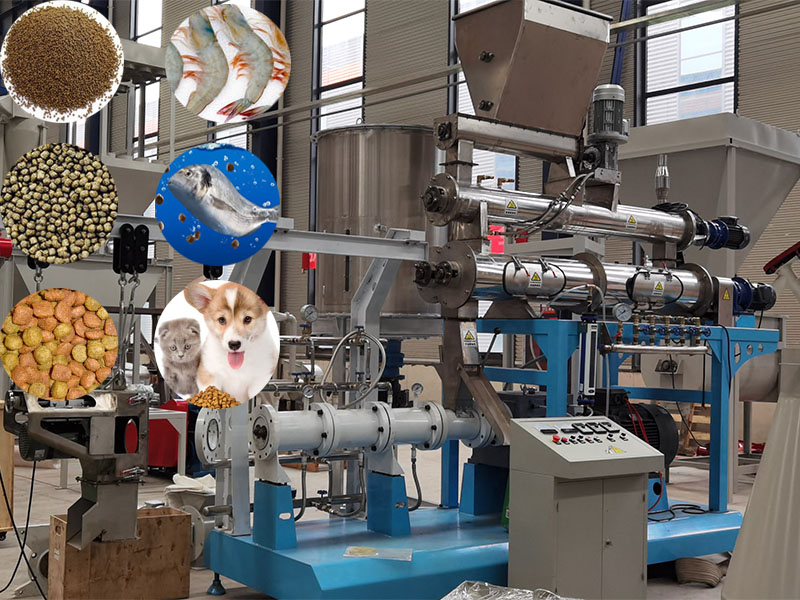
- 3.Under the same power conditions, the twin-screw extruder has higher output and higher production efficiency than the single-screw extruder.
The single-screw extruder has poor conveying capacity under high pressure conditions, and its processing output is also lower than that of the twin-screw extruder with the same power. This is mainly because the conveying device relies on drag flow. This conveying method is very sensitive to high pressure, and the pressure will cause the material to flow back and reduce the conveying efficiency. Since the delivery volume is equal to the drag flow minus the pressure flow, high pressure often causes a reduction in overall production.
- 4. Compared with the single-screw extruder, the feed produced by the twin-screw extruder has higher maturity/homogeneity and better quality.
1) The feed produced by the twin-screw extruder has a higher degree of maturity
During the operation of the twin-screw extruder, the twin-screw kneads and rubs against each other, so that the energy consumption is lower than that of the single-screw. In this way, the material can be kneaded and matured more fully, the overall degree of curing can reach more than 95%, the stability of the product in water can be maintained for more than 24h, and the surface smoothness and particle uniformity of the particles are also better. After the extruded extruded feed is fully matured, the animal not only tastes good, but also has a high digestibility and is easy to absorb nutrients. Therefore, when purchasing an extrusion extruder, it must be considered whether the maturation degree of the material can reach more than 90%.
2) The feed produced by the twin-screw extruder is more uniform
In the co-rotating twin-screw extruder, the properties of the co-rotating twin-screw pressure zone are different. The material in the inner cavity of the sleeve is affected by the rotation of the screw, resulting in a high-pressure zone and a low-pressure zone. Obviously, the material will move in two directions. Flow from high pressure area to low pressure area. One is to form two C-shaped material flows on the left and right along the inner wall of the sleeve with the rotation direction of the screw, which is the main flow of the material, and the other is to form a reverse flow through the gap of the screw meshing part. The reason for the reverse flow is that the left screw pulls the material into the meshing gap, and the right screw pulls the material out of the gap. As a result, the material moves forward in the shape of “∞”, and the screw edge not only produces positive conveying, but also allows the material to change direction. , which not only helps the mixing and homogenization of materials, but also provides better mixing and heat exchange. In this way, materials are conveyed, sheared, mixed and heated by the shell of the barrel, and matured under the action of high temperature and high pressure. It was finally squeezed out of the barrel.
The good mixing performance of the twin-screw makes the heat obtained by the material uniform in time, accelerates the degree of maturation of the material, reduces the fluctuation of the material temperature, and improves the output and quality of extruded products.
- 5.Compared with the single-screw extruder, the production process of the twin-screw extruder has less wear on the machine
During the operation of the twin-screw extruder, the screw flight not only produces positive conveying, but also allows the material to change direction, which not only helps the mixing and homogenization of the material, provides better mixing and heat exchange, but also makes the screw Grinding (that is, shearing) and rolling effects occur between the teeth, and a calendering effect occurs, which is much smaller than the reverse screw calendering effect. Of course, the calendering effect is small, and the wear of the material on the screw is also reduced.
From the difference between the single-screw extruder and the twin-screw above, we can see that the twin-screw extruder has more advantages. However, in the actual production process, we have to choose the machine according to our actual situation. In most cases, the single-screw extruder can meet the needs of most households farm usage and small feed plant. If we use it for ourselves, for a beginner, the scale is small, and the funds are not very sufficient. The single-screw extruder is our best choice.
However, if we are a professional feed processing factory and distributor, we must consider more long-term and more factors when choosing feed production equipment. We should not only consider price, but also comprehensive cost-effectiveness, feed quality, and production costs and production costs per ton of product. The twin-screw model has good operational stability. During the feed processing process, the startup cost is low, the waste of water and gas is low, the labor cost is low, the heat transfer efficiency is high, the yield is high, the kWh output index is high, and the cost of accessories is also high. Low, its final production cost is still much lower than that of a single screw. Taken together, twin-screw extruder is a professional feed processing plant and a better choice for distributors
Back to List

